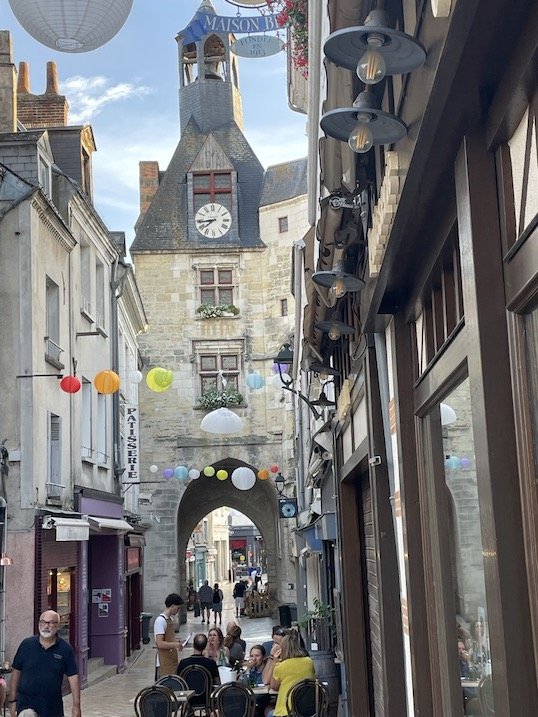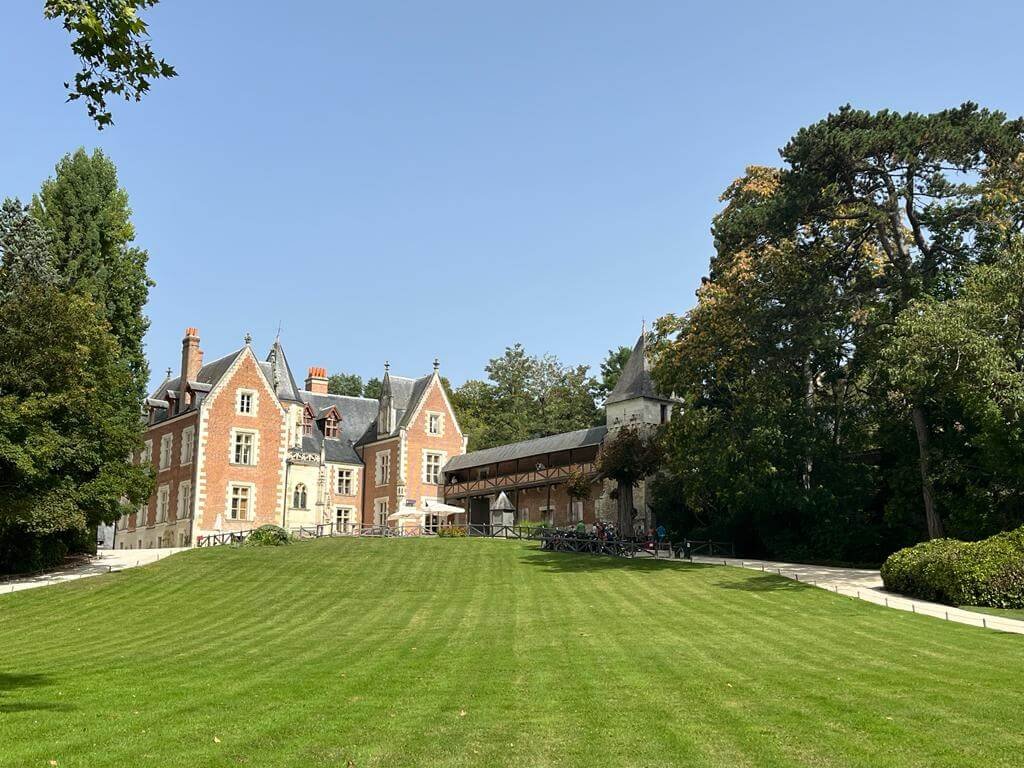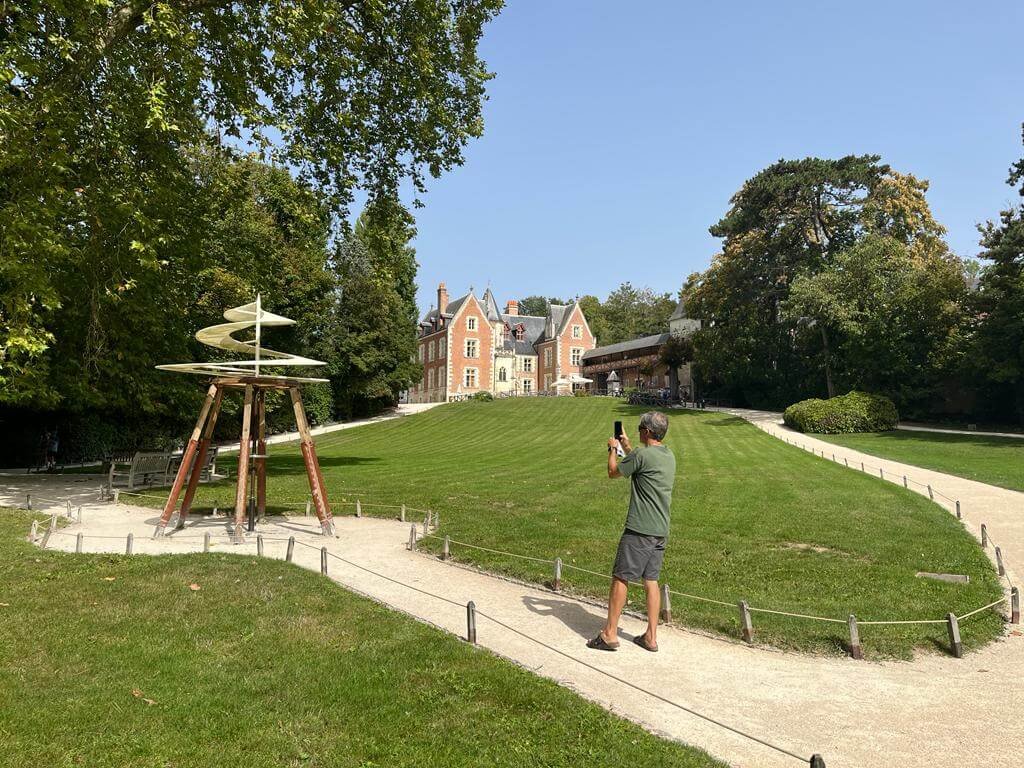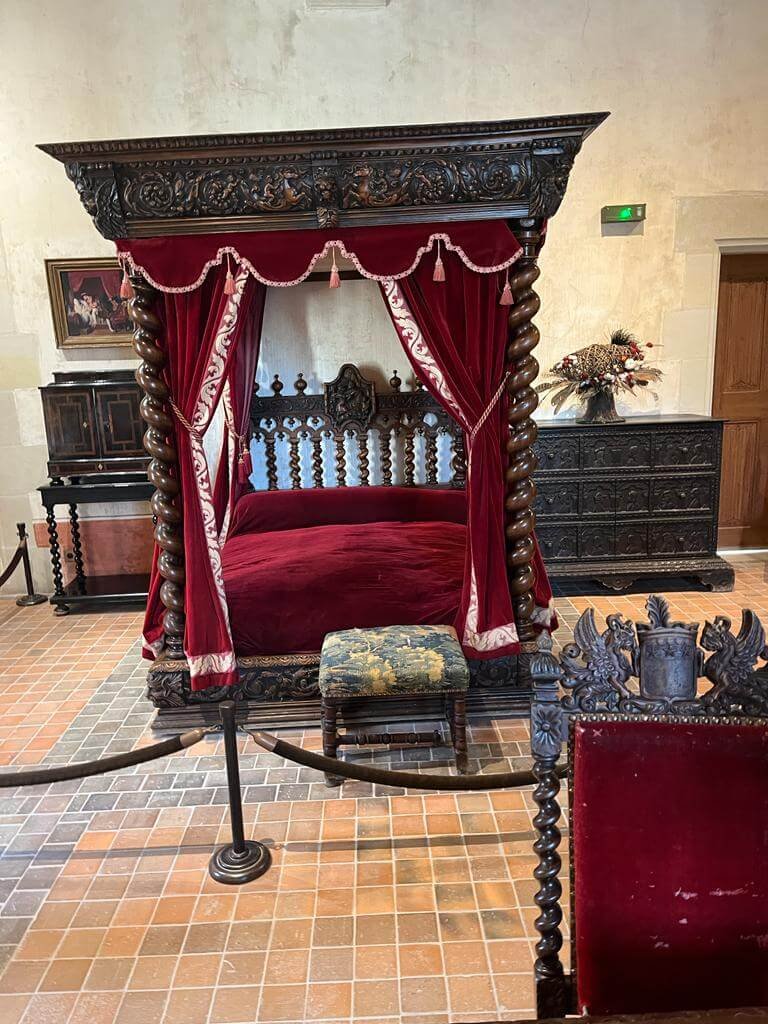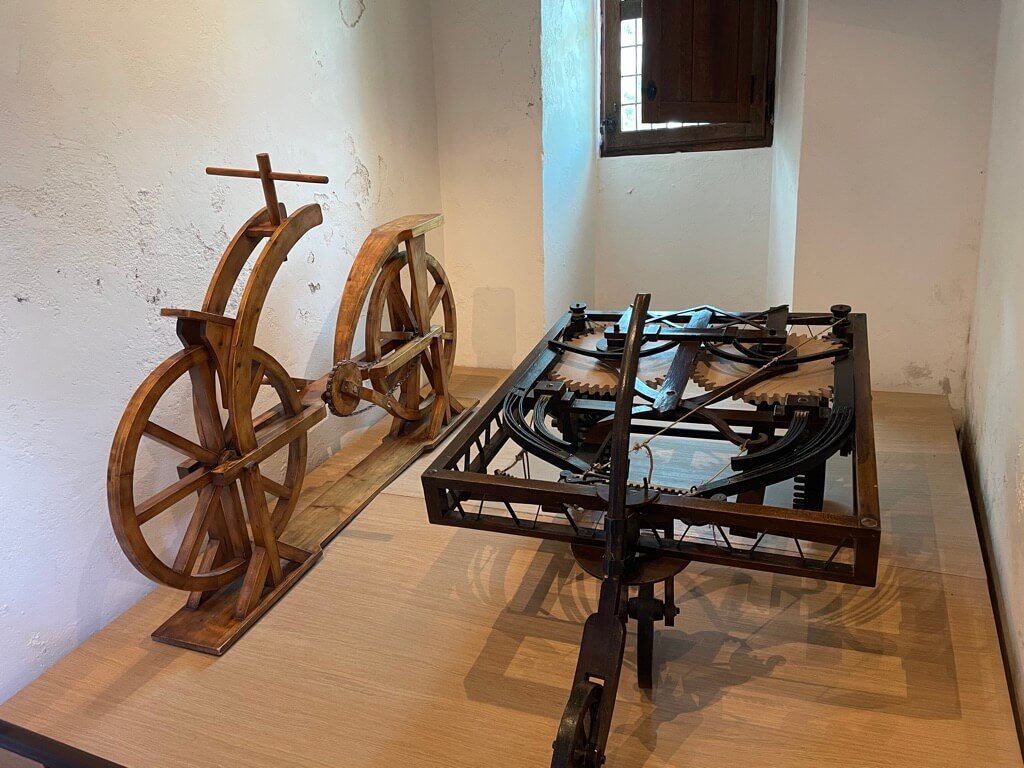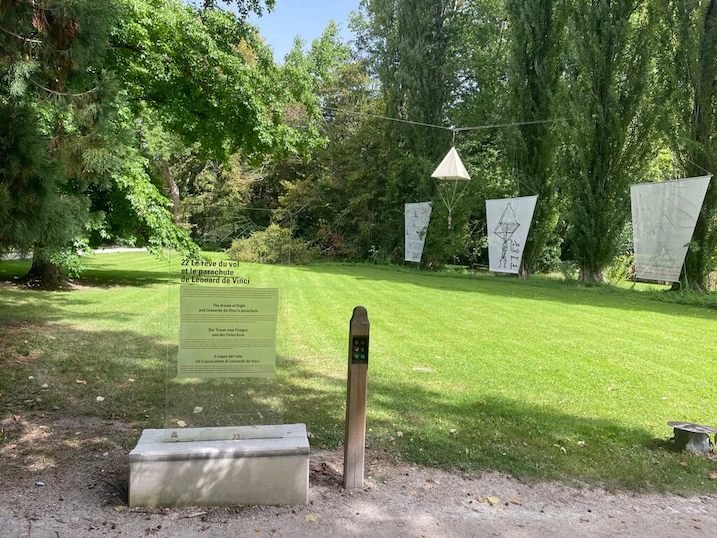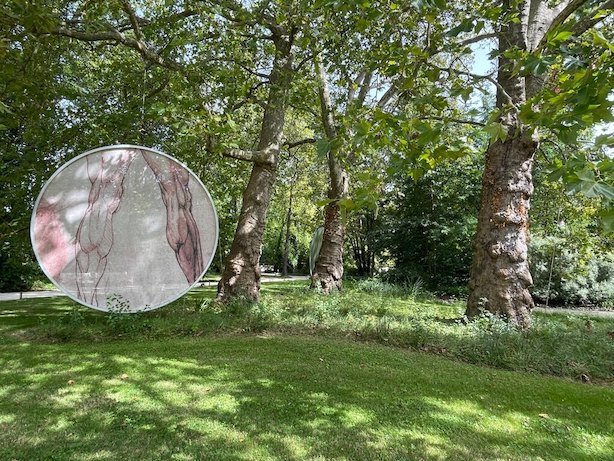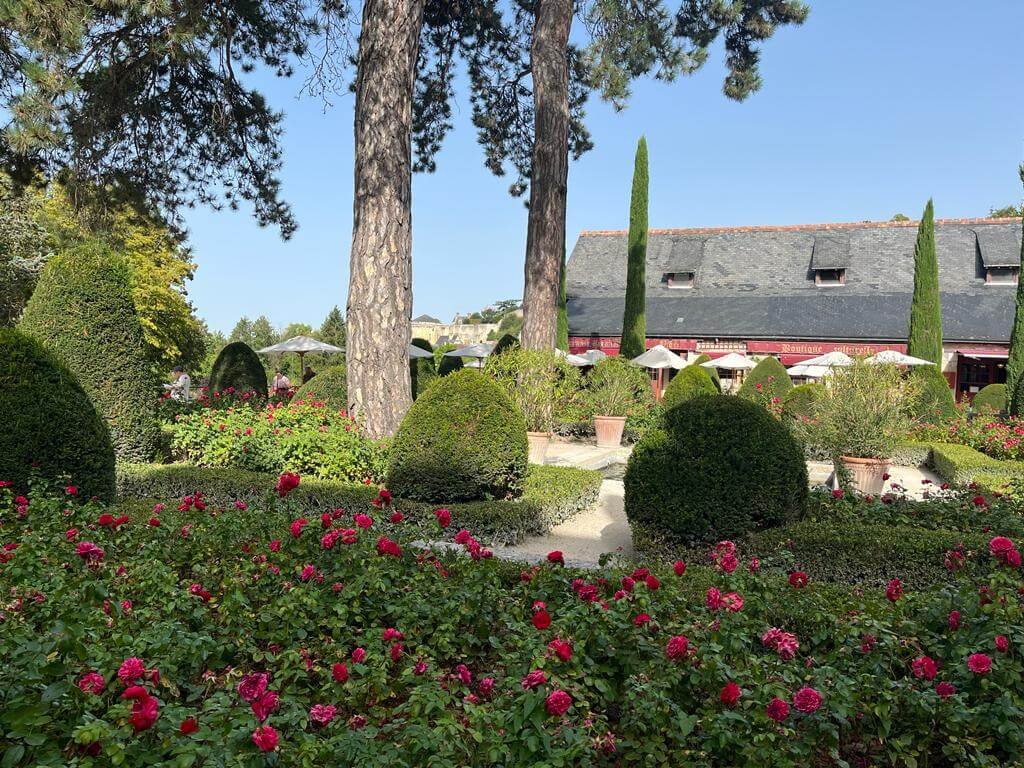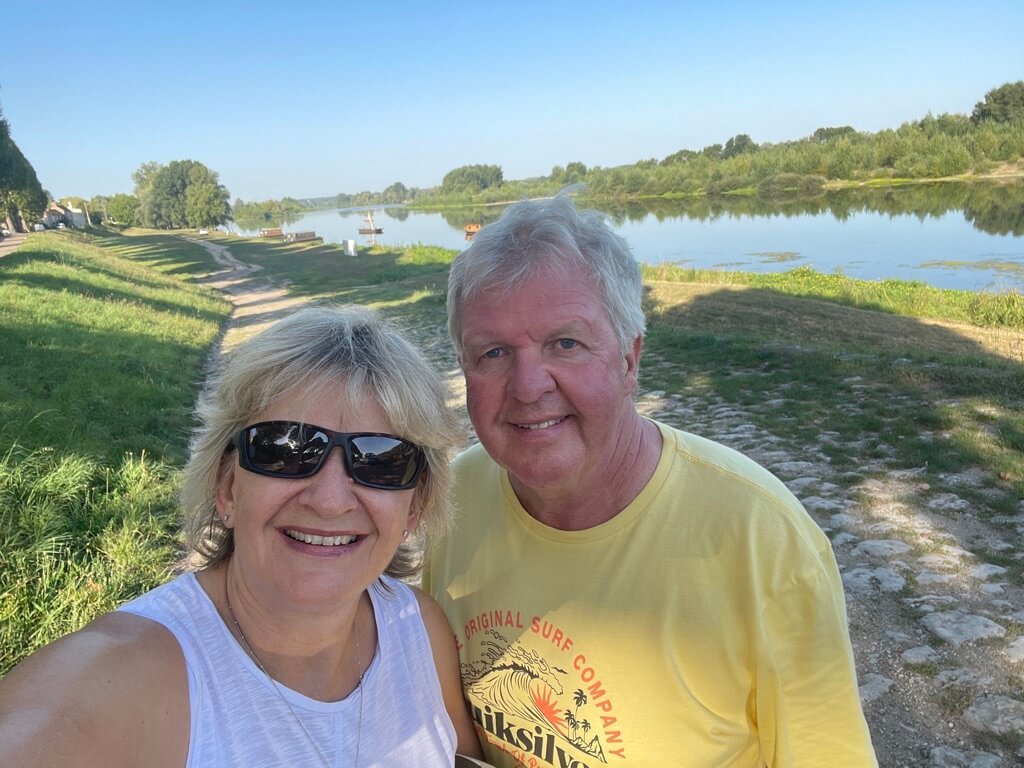Discover the delights of Amboise Loire Valley
Château Royal Amboise - Source: Winekeller
Come with us as we explore Amboise and the Chateau Royal Amboise and Leonardo da Vinci’s house - as well as visit Chambord, the most magnificent of the Loire Valley castles
Amboise in Touraine Loire Valley is not just a pretty and historic town on the River Loire, it’s also home to one of the most important of the Renaissance châteaux of the Loire Valley - Chateau Royal Amboise - as well as Château du Close Lucé, the last home of genius Leonardo da Vinci. These two famous monuments alone certainly justify a visit to Amboise Loire Valley, but add to this the fabulous Amboise wines and the beautiful scenery and nature on this stretch of France’s most famous river and it has to be on your list!
We enjoy an Amboise wine tasting at top winery Domaine Bonnigal-Bodet and also visit beautiful nearby Blois and enjoy a 1-day Loire Valley bike tour from Blois to Chambord Castle - arguably the most famous and most magnificent of all of the châteaux of the Loire Valley.
The beautiful Loire near Amboise - source: Winekeller
About Touraine Loire Valley
The Loire Valley’s Touraine region provides visitors with an exceptional historic, architectural and natural heritage, stretching from Amboise in the east to the beautiful village of Candes-Saint-Martin in the west. It’s a beautiful, peaceful section of the Loire river, with broad stretches, interspersed with small islands and shifting sandbanks and as well as the Loire, there are its 2 tributaries which flow through Touraine, the Vienne and the Indre rivers.
Touraine is the location of many significant and magnificent historic French landmarks including Amboise, Chenonceau, Villandry, Azay-le-Rideau and Langeais, the historic city of Tours or the mediaeval towns of Chinon and Loches.
For more information about the Touraine, Loire Valley, see here.
Touraine wines
Touraine in the Loire Valley wine region is a large and French wine region, representing some 16,000 hectares of vineyards and some 1600 winegrowers producing approximately 132 million bottles each year.
The vineyards sit at the crossroads of the Atlantic influences and continental climate and the Loire and its tributaries have both shaped the landscape and given the region its rich soils.
Touraine produces all colours of Loire Valley wines. Whites account for some 60%, reds for over 20%, then the rest is made up of sparkling wine and rosé. The main grape varieties for Touraine wines are Sauvignon blanc and Chenin blanc for white wines and for Touraine red wines, Cabernet franc, Côt (Malbec) and Gamay.
Touraine wines tend to be quite fresh, well-structured, fragrant and fruity.
Learn more about Touraine wines and the Touraine winegrowers.
Touraine vineyard map - source: Vins du Val de Loire
AOC Amboise
AOC Amboise is located just next to AOC Vouvray - the famous home of Loire Chenin blanc - and the clay soils and terroir are very similar, albeit the winters are about 2 degrees warmer in the Amboise vineyards, benefiting from greater protection from the cold winds and frosts.
The vineyards surround the town of Amboise and the appellation ‘Touraine-Amboise’ produces all styles of Touraine wines, from the Loire Chenin blanc white grape and in terms of Loire Valley red wines, Gamay, Côt, Cabernet franc and Cabernet sauvignon. There are about 30 wine producers today in AOC Amboise.
Visit to Bonnigal-Bodet winery
Domaine Bonnigal Bodet is located in Limeray, close to Amboise and in the heart of the Loire Valley wine region. Having been handed down from father to son since 1927, the domaine is managed today by 4th generation and long-time best friends Jean Baptiste Bonnigal and Stéphane Bodet, who took over together in 2015.
The estate spans some 42 hectares across a variety of terroirs, mostly clay, flint and limestone soils and the vineyards are planted with a multitude of local grape varieties, including Chenin blanc, Côt (local Malbec variety), Sauvignon blanc and Pineau d’Aunis. 70% of the vines planted however, are Loire Chenin blanc.
The domaine has been certified organic since the 2022 vintage and both organic and biodynamic practices are followed. Today Jean Baptiste and Stéphane apply skills learned in New Zealand and Bordeaux to create wine of both precision and purity, believing that the work in the vineyard is essential to harvesting grapes of optimum quality. Work started in 2015 to improve and regenerate the soils and to increase biodiversity and 4 years later, in 2019, they started to notice a real increase in the quality of the wines.
Bonnigal-Bodet wines
Amboise ‘single vineyard wines’
Domaine Bonnigal-Bodet produces a superb range of single vineyard wines under the brand ‘Amboise’. These consist of both white and red wines, based on Loire Chenin blanc and Côt respectively. Production is relatively low for these excellent wines - approximately 6-10k bottles/year of each.
The Amboise single vineyard white wines are very pure and expressive, with excellent acidity and ageing potential and include the wines below (see the tasting notes for those wines we tasted during our visit):
Le Clos de Beauce (2022) - made from 50/70 year old vines, 8 months in barrique - lots of green apple flavours
Les Tonnes Barils
Le Clocher (2022) - 20 year old vines, typical Chenin blanc - lots of grapefruit and lemon
Les Beauvoirs (2019) - 20 months ageing (12 in stainless steel), honeysuckle, white flowers flavours
Le Buisson (2019) - 20 months ageing (12 in stainless steel), complex, white fruits, grapefruit flavours
The Amboise single vineyard red wines include:
Genesis (2022) - 100% Côt, aged in stainless steel only, a lighter summer red wine, to be drunk now
Mont Luma
Les Séminées (2018) - 6 months aged in barriques, 6 months in stainless steel, fresh, long, good tannins
Sparkling range - Crémant de Loire
Bonnigal-Bodet produces an excellent range of sparkling wines, made onsite by the traditional Champagne method. We loved these wines and found them to be excellent gastronomic sparkling wines with lots of structure and flavour.
Brut d’enfer blanc/rosé NV - 70% Chenin blanc, 30% Chardonnay, 36 months ageing, lots of crisp apple flavours
Brut d’enfer blanc vintage (2016) - 100% Chenin blanc, 60 months ageing - a stunning wine
Bonnigal-Bodet also produces a small quantity of a ‘Vin de France’ wine called Bras d'Aunis,made from a local grape variety, as well as a range of regional white, rosé and red ‘Touraine’ wines.
Book a wine tasting at Bonnigal-Bodet
Contact Bonnigal-Bodet to arrange an Amboise wine tasting - the cost at the time was 15 euros pp max 10 people.
Visit Amboise
The Château Royal Amboise - source: Winekeller
Amboise old town - source: Winekeller
A visit to the Loire Valley wine region has to include a stop at the ‘Royal City’ of Amboise, home to mediaeval seats of power, royal residences and stunning gardens and the ‘Capital of French Renaissance’ - testimony to the Renaissance style imported into France from Italy in the 15th and 16th centuries.
Not only is Amboise home to the spectacular Château Royal Amboise, standing on a rocky outcrop majestically surveying the Loire below and the favourite home of France’s royal rulers, you can also visit two further famous landmarks in Amboise - Château du Clos Lucé, the last home of Leonardo da Vinci and Château Gaillard, famous for its Renaissance gardens.
Amboise is simply a feast to the senses - stroll through the beautiful old town and small streets with their beautiful buildings and stunning architecture, soak up the sights of Amboise and its magnificent château from the banks of the Loire and enjoy the wonderful array of bars, cafés and restaurants, where you can appreciate the local delicacies and Amboise wines!
If you can, try to be in Amboise on a Friday or Sunday morning to experience the famous Amboise market, held on the banks of the Loire - this will certainly wake up all your senses!
Where to stay in Amboise
We rented an Airbnb in the centre of Amboise which was perfect for us and provided ideal space for storing our bikes too. There are lots of accommodation choices - see here for some ideas!
Best restaurants in Amboise
Amboise is known for its excellent food and relaxed lifestyle!
There is a great choice of restaurants and bars and we can particularly recommend Brasserie Hippeau and Bistrot Chez Bruno.
However we can also recommend visiting one of the many bakeries - or indeed the Amboise market - and preparing a picnic to enjoy on the banks of the Loire. We enjoyed a cycle ride along the river one evening, stopping at a shady spot to enjoy a picnic and a bottle of wine and of course the wonderful views - is there anything better?
Château Royal Amboise
The Royal château of Amboise is an icon of French history and almost all of France’s rulers stayed here. The mediaeval fortress became a royal residence during the reigns of King Charles VIII and François I and its fame and splendour attracted artists, the most famous of which being Leonardo da Vinci who is buried in the chapel.
Amboise castle was the favourite residence of the Kings of France and a place to bring up their children. It was the childhood home of Francis I and during his reign it reached the height of its glory. Francis I was responsible for the construction of nearby Château de Chambord (see later), and spent part of his childhood at Amboise, before succeeding Charles VIII. Years later, the children of King Henry II and his wife Catherine de’ Medici were brought up here, and Louis XIV and Louis-Napoleon Bonaparte also both spent brief periods at the château.
Guided and non-guided tours of the castle and gardens are offered and visitors can walk through the royal apartments, stroll around the ramparts, visit the Saint Hubert Chapel and Leonardo da Vinci’s grave and stroll through the splendid gardens.
Château Royal Amboise is a significant monument in France, with a fascinating history and it is very much worth visiting
Château Royal Amboise and gardens
Château du Clos Lucé Amboise
Clos Lucé Amboise is the final dwelling place of Leonardo da Vinci, who ended his time here in Touraine, so reminiscent to him of his native Tuscany. The celebrated Italian painter lived in the Château of Le Clos Lucé at the invitation of Francis I in 1516, who gave him full use of the estate.
He was appointed ‘First Painter, Engineer and Architect of the King’ and he stayed here until his death in May 1519. As this title suggests, Leonardo da Vinci was much more than an artist, he was an engineer, an inventor, an architect, a botanist and a naturalist and is widely considered a genius before his time.
Clos Lucé was painstakingly restored, starting in 1959, to share with the world the heritage, memory, work and knowledge of this most famous of artists. You can visit the château and wander through the restored rooms, experiencing Leonardo’s daily life and environment, including his studios, workshop and the Renaissance bedchambers and living rooms.
Leonardo da Vinci Park
You can find many models of da Vinci’s inventions in the chateau and in the grounds and galleries dedicated to his work. What makes a visit to Clos Lucé Amboise, is the landscaped trail in the ‘Leonardo da Vinci Park’ - showcasing an outdoor museum, with models of his inventions, many of them interactive, with information and audio points making this a truly immersive and fascinating experience.
Domaine Royal de Château Gaillard
Château Gaillard was built in Amboise by King Charles VIII in 1496 and has been listed as a historic monument in France since 1963. It is located close to both the Amboise castle and Château du Clos Lucé and is perhaps most recognised for its Renaissance gardens, the first in France, designed by Europe’s most famous gardener, Dom Pacello da Mercogliano, who in 1500, acclimatised the first orange trees in France here.
Château Gaillard
Pagoda of Chanteloup
Pagoda of Chanteloup
A short cycle ride outside of Amboise lies another incredible landmark - the Pagoda of Chanteloup standing in a 14 hectare park, in front of an ornamental lake and all that remains of a great château belonging to the Duke of Choiseul. The Pagoda was built in 1775 and at 44 metres high, its summit offers a beautiful view over the Loire Valley
Visit Blois
Just east of Amboise lies another ‘Royal City’, Blois - with its lively old town, cathedral and of course the royal ‘Château de Blois’ - another favourite residence of the Kings of France in the Renaissance and home to no fewer than 10 queens and 7 kings, including Louis XII and Francis I, his nephew and successor.
The château overlooks the city of Blois and the Loire and is definitely worth visiting, as is the lovely old town.
We stayed in Blois for a couple of nights at an Airbnb and on one of our days we enjoyed a superb cycle ride from Blois to Chambord Castle - see below.
Visit Chambord Château
Our 1 day bike tour from Blois to Chambord Castle was a highlight of our Loire Valley bike wine tour! The return route was about 45km, but the cycling is made easy as it’s relatively flat, along the Loire and cross-country through beautiful Loire countryside.
Strictly speaking Chambord is just outside of the Touraine region, but it is such an incredible architectural masterpiece and the largest of all of the Loire châteaux, it merits a visit if you’re close by!
Chambord Château is a UNESCO World Heritage Site and was built by François I, the realisation of his dream to build the most extravagant and sumptuous Renaissance château and hunting palace. The château is set within a huge forest and spanning some 5440 hectares, the Domaine is the largest walled estate in Europe (the wall is 32 kms long!). Despite the size and grandeur of Chambord, François I only spent a total of 50 days there in his 32 years reign!
You need at least a day to explore Chambord. You can of course visit the castle and learn more about its history, but also make time to explore the spectacular formal gardens, the beautiful park land, the vegetable gardens, the vineyards and the stables.
We actually didn’t visit the château, we just enjoyed cycling around the extensive park and gardens - but whatever you decide to do, plan your day at Chambord carefully, so you get to do what interests you most! There are lots of places to eat and drink at Chambord, so make a day out of it!
It’s hard to describe Chambord Château - it’s just so magnificent, majestic and breathtaking - hopefully these pictures give you some impression of what it’s like to see it for the first time!
Useful information for visiting Touraine Loire Valley
For the practical information you need when visiting this part of the Loire Valley see here. This website also has lots of information about accommodation options.
When to visit Touraine:
For wine lovers, there are two major wine tourism events in Touraine not to be missed: ‘Vitiloire’ (the great wine festival of the Loire Valley, in Tours at the beginning of June) and Vignes Vins Randos (15 walks throughout the Loire Valley vineyards, at the beginning of September).
Conclusion and personal highlights
We loved Amboise - there’s so much to see and do here and of course a highlight was our 1 day cycle ride from Blois to Chambord - the château just has to be seen to be believed!











